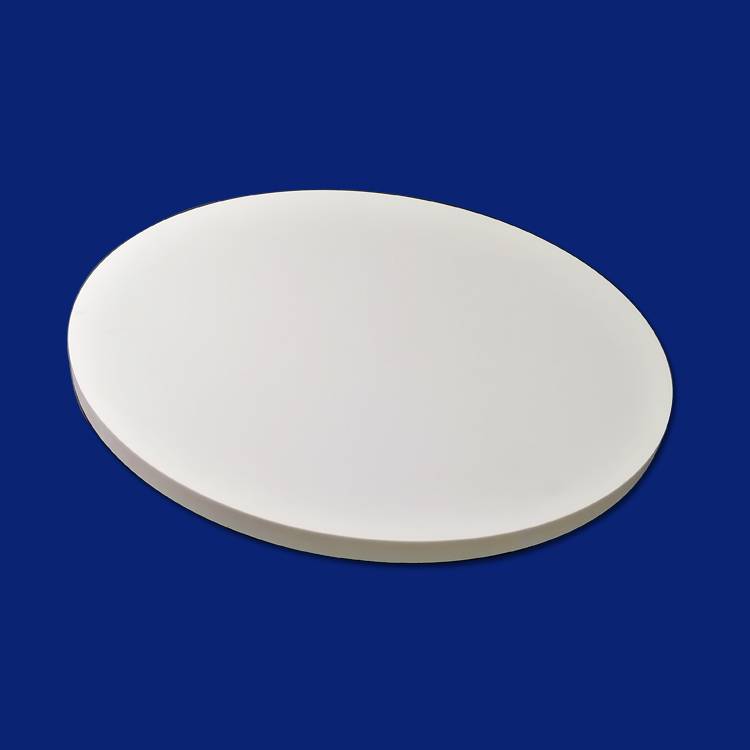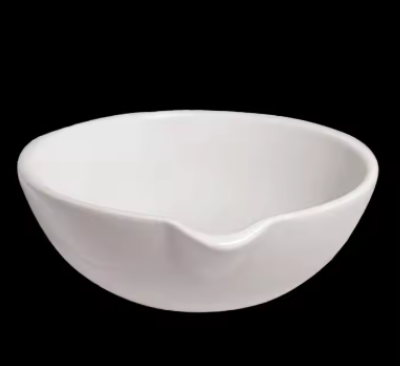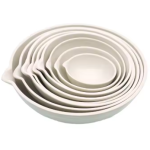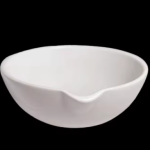Professional Premium Aluminum Oxide Products Supplier
PRODUCT PARAMETERS
Description
Overview of Alumina Dish
An Alumina Dish is a ceramic dish made primarily from alumina (Al₂O₃), a highly durable and heat-resistant material derived from aluminum oxide. Alumina dishes are known for their strength, resistance to high temperatures, and electrical insulating properties. Due to these characteristics, alumina dishes are commonly used in various laboratory and industrial applications. Alumina is one of the most commonly used materials in high-performance ceramics because it exhibits excellent wear resistance, chemical stability, and electrical insulation properties.
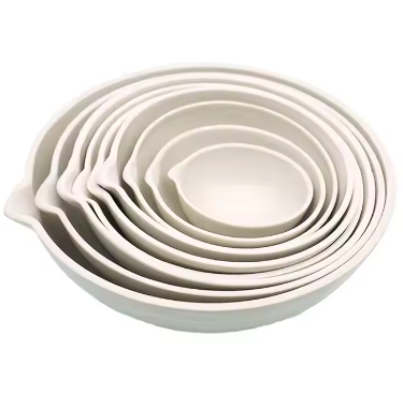
Alumina Dish
Features of Alumina Dish
- High-Temperature Resistance: Alumina dishes can withstand very high temperatures (typically up to 1,600°C or more), making them ideal for use in high-temperature environments such as laboratories or industrial furnaces.
- Chemical Inertness: Alumina is chemically inert, meaning it does not react with most acids, bases, or solvents. This makes alumina dishes suitable for use with reactive chemicals.
- Mechanical Strength: Alumina dishes are known for their excellent mechanical properties. They are strong and resistant to wear, crack, and breakage, which enhances their durability in harsh conditions.
- Electrical Insulation: Alumina has good electrical insulating properties, which is particularly important for applications involving electrical components or circuits.
- Thermal Conductivity: Although alumina is a good insulator, it also offers controlled thermal conductivity, making it effective in applications where heat needs to be distributed evenly.
- Surface Smoothness: The surface of alumina dishes is usually very smooth, making them easy to clean and resistant to contamination.
- Non-Toxic: Alumina is non-toxic and food-safe in its pure form, though this depends on the specific application (e.g., if the dish is used in contact with food or chemicals).
Specifications of Alumina Dish
| Specification | Description |
| Material | Alumina (Al₂O₃), a high-purity aluminum oxide ceramic |
| Temperature Resistance | Up to 1,600°C (2,912°F) or higher, depending on grade |
| Chemical Resistance | Highly resistant to acids, bases, and most solvents |
| Mechanical Strength | High tensile strength, resistant to wear and cracking |
| Density | Typically around 3.9-4.1 g/cm³ (varies depending on purity and manufacturing process) |
| Porosity | Low porosity, providing excellent surface smoothness and minimal absorption |
| Hardness | Very high, typically 9 on the Mohs scale of hardness (similar to sapphire) |
| Thermal Conductivity | Moderate (approximately 30-35 W/m·K) depending on temperature and purity |
| Electrical Resistivity | High electrical resistivity, making it an excellent electrical insulator |
| Surface Finish | Smooth, uniform surface (may be polished or unpolished depending on application) |
| Size Range | Typically available in sizes from a few centimeters to over 30 cm in diameter, but can be customized |
| Weight | Varies depending on size, typically ranges from a few grams to several kilograms |
| Food Safety | Generally non-toxic and food-safe, though suitability should be confirmed for specific applications |
| Typical Applications | Laboratory, furnace linings, crucibles, electrical components, medical equipment, ceramics |
Applications of Alumina Dish
Alumina dishes are versatile and find applications across various fields due to their unique properties. Some of the key applications include:
- Laboratory Use: Alumina dishes are widely used in laboratories for heating, drying, or evaporating substances at high temperatures. They are often used in procedures like calcination, ignition, or fusing substances.
- Furnace Linings: Due to their high heat resistance, alumina dishes are used as furnace linings or crucibles in metal processing, ceramics, and other high-temperature industrial applications.
- Electrical Components: Alumina is commonly used in the manufacture of electrical insulators, circuit components, and substrates in electronics due to its excellent insulating properties.
- Manufacturing and Metallurgy: Alumina dishes are often used in the production of metal alloys, ceramics, and other materials that require high temperatures for processing.
- Microwave Applications: In some cases, alumina is used in microwave devices, including components in microwave ovens or other high-frequency applications, due to its dielectric properties.
- Medical Equipment: In medical applications, alumina’s biocompatibility and strength make it suitable for use in prosthetics, implants, and other medical devices.
- Ceramic Kilns and Pottery: In pottery and ceramics, alumina dishes are used as part of kiln components and to hold materials during firing processes.

Company Profile
Alumina Technology Co., Ltd.! We focus on the research and development, production and sales of alumina products, serving the electronics, ceramics, chemical and other industries. Since its establishment in 2005, the company has been committed to providing customers with the best products and services, and has become a leader in the industry through continuous technological innovation and strict quality management.
Our products includes but not limited to Alumina Boat, Alumina Crucible, Alumina Dish, Alumina Foam Filter, Alumina Plate, Alumina Rod, Alumina Bar, Alumina Balls, Filter Alumina, Nano Alumina Powder, Spherical Alumina Powder, ect. please feel free to contact us.(nanotrun@yahoo.com)
Payment Methods
T/T, Western Union, Paypal, Credit Card etc.
Shipment Methods
By air, by sea, by express, as customers request.

FAQs about Alumina Dish
- What is an alumina dish made of?
- An alumina dish is made primarily from alumina (Al₂O₃), a ceramic material derived from aluminum oxide. It is highly resistant to heat, wear, and chemicals.
- What are the temperature limits for an alumina dish?
- Alumina dishes can generally withstand temperatures up to 1,600°C (2,912°F), but the exact temperature limit can vary depending on the specific grade of alumina used.
- Can alumina dishes be used for food preparation?
- Alumina dishes are generally non-toxic and food-safe in their pure form, but they are more commonly used in laboratory or industrial settings. If you plan to use them in food preparation, ensure they are specifically labeled as food-safe.
- Are alumina dishes durable?
- Yes, alumina dishes are known for their mechanical strength and durability. They are resistant to breakage, wear, and corrosion, making them long-lasting in harsh environments.
- How do I clean an alumina dish?
- Alumina dishes can be cleaned with mild detergents and water. For tougher stains, use a non-abrasive cleaner. Avoid using harsh chemicals that might damage the surface or compromise its properties.
- Are alumina dishes chemically resistant?
- Yes, alumina is highly chemically resistant, making these dishes suitable for use with many acids, bases, and solvents without degrading or reacting with the substances.
- Can alumina dishes be used in microwave ovens?
- While alumina dishes are used in some microwave applications due to their dielectric properties, it is important to confirm that a particular alumina dish is microwave-safe before use. Standard alumina dishes designed for laboratory or industrial purposes may not be suitable for microwaving food.

